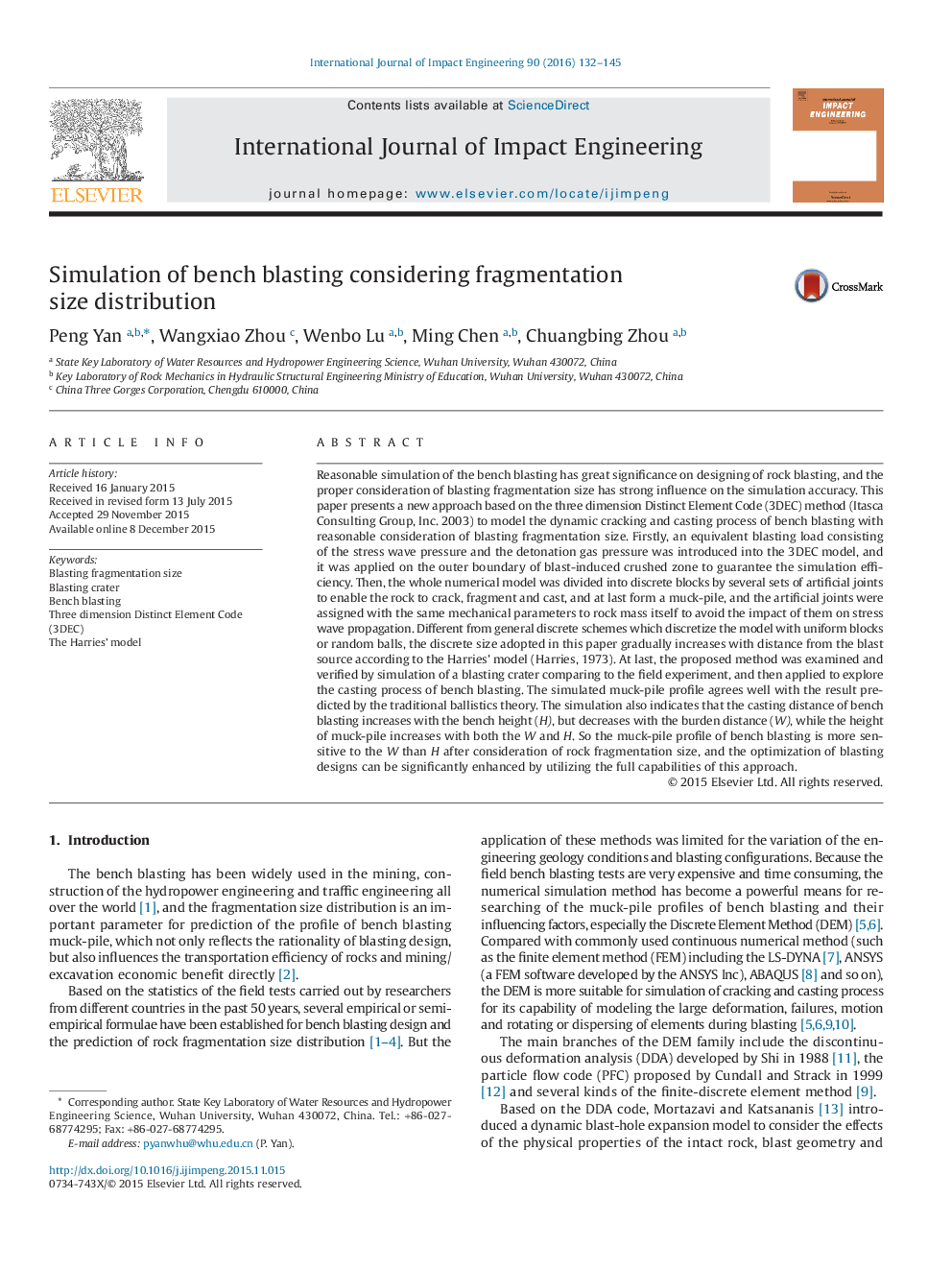| Article ID | Journal | Published Year | Pages | File Type |
|---|---|---|---|---|
| 776355 | International Journal of Impact Engineering | 2016 | 14 Pages |
•An equivalent blasting load considering the detonation gas pressure was adopted.•Artificial joints with same parameters to rock were used to avoid adverse impacts.•Blasting fragmentation size is preset according to the Harries' theory.•The muck-pile profile of bench blasting is more sensitive to the burden distance.
Reasonable simulation of the bench blasting has great significance on designing of rock blasting, and the proper consideration of blasting fragmentation size has strong influence on the simulation accuracy. This paper presents a new approach based on the three dimension Distinct Element Code (3DEC) method (Itasca Consulting Group, Inc. 2003) to model the dynamic cracking and casting process of bench blasting with reasonable consideration of blasting fragmentation size. Firstly, an equivalent blasting load consisting of the stress wave pressure and the detonation gas pressure was introduced into the 3DEC model, and it was applied on the outer boundary of blast-induced crushed zone to guarantee the simulation efficiency. Then, the whole numerical model was divided into discrete blocks by several sets of artificial joints to enable the rock to crack, fragment and cast, and at last form a muck-pile, and the artificial joints were assigned with the same mechanical parameters to rock mass itself to avoid the impact of them on stress wave propagation. Different from general discrete schemes which discretize the model with uniform blocks or random balls, the discrete size adopted in this paper gradually increases with distance from the blast source according to the Harries' model (Harries, 1973). At last, the proposed method was examined and verified by simulation of a blasting crater comparing to the field experiment, and then applied to explore the casting process of bench blasting. The simulated muck-pile profile agrees well with the result predicted by the traditional ballistics theory. The simulation also indicates that the casting distance of bench blasting increases with the bench height (H), but decreases with the burden distance (W), while the height of muck-pile increases with both the W and H. So the muck-pile profile of bench blasting is more sensitive to the W than H after consideration of rock fragmentation size, and the optimization of blasting designs can be significantly enhanced by utilizing the full capabilities of this approach.
